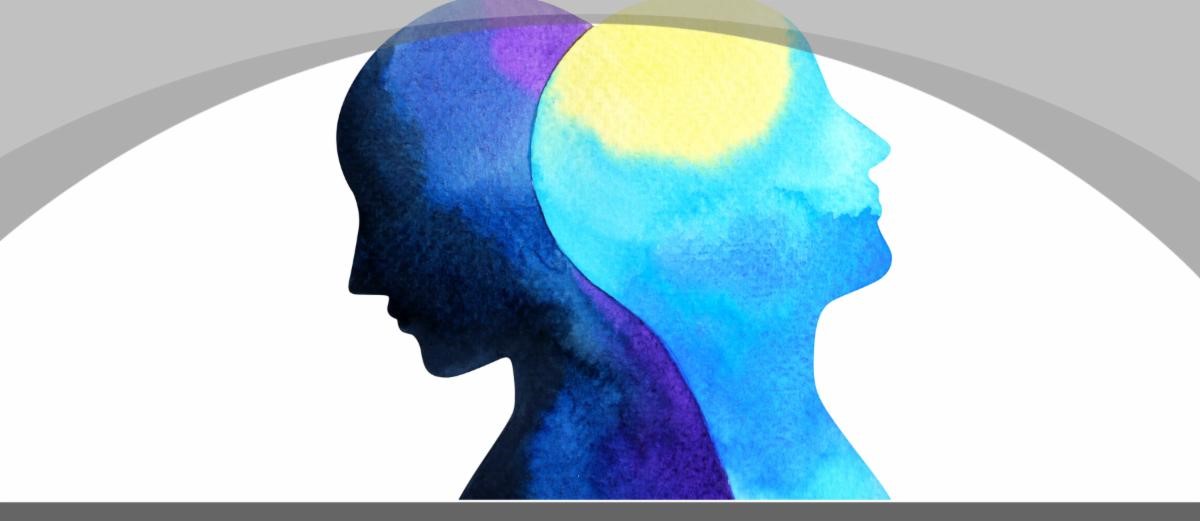Demystifying Bipolar Depression
By: Zachary Pettibone, MD
Staff Psychiatrist, Lindner Center of HOPE
Assistant Professor of Clinical Psychiatry
University of Cincinnati
Bipolar depression has been gaining attention recently in popular culture and the profession of psychiatry. New medications have emerged to manage this often difficult to treat illness. Bipolar depression denotes a specific type of “depression,” a distinction often unknown to patients seeking treatment and not always appreciated by clinicians. One of the most difficult challenges in clinical psychiatry is characterizing a depressive episode as falling within the diagnosis of major depressive disorder (MDD, sometimes referred to as “unipolar depression”) or bipolar disorder (BP, occasionally referred to as “manic depression”). The distinction is of critical importance because pharmacotherapy for BP and MDD differ significantly. Misdiagnosis and subsequent mismanagement can lead to years of suffering from adverse medication side effects and inadequate stabilization of symptoms.
A major depressive episode, as defined by the American Psychiatric Association (APA), is “a period of at least two weeks in which a person has at least five of the following symptoms (including at least one of the first two symptoms): intense sadness or despair, loss of interest in activities the person once enjoyed, feelings of worthlessness or guilt, fatigue, increased or decreased sleep, increased or decreased appetite, restlessness (e.g., pacing) or slowed speech or movement, difficulty concentrating, and frequent thoughts of death or suicide.” This same definition is used for depressive episodes in both MDD and BP. Despite the diagnostic overlap, depressive episodes in MDD and BP are considered distinct entities with their own indicated treatments. This leads to the question: given the same diagnostic criteria, how does one distinguish MDD depression from BP depression?
The primary differentiating factor is the presence or absence of manic or hypomanic episodes. A manic episode is defined by the APA as “a period of at least one week when a person is extremely high-spirited or irritable most of the day for most days, possesses more energy than usual, and experiences at least three of the following changes in behavior: decreased need for sleep (e.g., feeling energetic despite significantly less sleep than usual), increased or faster speech, uncontrollable racing thoughts or quickly changing ideas or topics when speaking, distractibility, increased activity (e.g., restlessness, working on several projects at once), and increased risky behavior (e.g., reckless driving, spending sprees).” These behaviors must represent a change from the person’s usual behavior and be clear to friends and family and cause significant impairments in occupational and social functioning that frequently necessitate psychiatric hospitalization. Hypomania is a milder form of mania that lasts for a shorter period and does not disrupt daily functioning.
If such an episode has occurred, the diagnosis is clear: BP depression. However, depressive episodes pre-date manic/hypomanic episodes in most cases of BP. In some instances, previous manic/hypomanic episodes were overlooked. And in other cases, a patient may mistake symptoms of mania for other psychiatric diagnoses, such as ADHD, borderline personality disorder, anxiety, and drug abuse. Further complicating the picture is the fact that these illnesses commonly coexist with BP.
Laboratory tests and imaging modalities have yet to be developed for diagnosing MDD and BP. The diagnosis is based on clinical interviews and observations. There are validated self-report symptom questionnaires that can help diagnose and facilitate discussion among patients and mental health providers. One frequently used instrument is the Mood Disorder Questionnaire (MDQ). Collateral information from friends, family, and coworkers can be invaluable for supplementing a patient’s recollection of symptoms and behaviors.
Some studies suggest there may be subtle differences in the way depression manifests clinically in BP and MDD, such as more severe motor slowing and predominance of atypical symptoms (hypersomnia and increased appetite) in BP depression. Other clues from a patient’s history may help point to BP over MDD, such as early onset of depressive episodes, the presence of psychotic features, severe and frequent depressive episodes, high anxiety, episodes that have not responded to traditional antidepressant therapy, substance misuse, a history of ADHD, and suicidality. No single feature is diagnostic, however. Each piece of the history must be considered in the context of the entire presentation.
The medications used to treat each type of depression are very different, and often ineffective or even harmful if used for the incorrect type of depression. For someone seeking treatment for undifferentiated depression with no history of mania or other strong indications of BP, an antidepressant medication is typically recommended. Commonly used antidepressants include selective serotonin reuptake inhibitors (SSRIs) and selective serotonin norepinephrine reuptake inhibitors (SNRIs). Other antidepressants with different mechanisms of action may also be used to treat MDD. There is debate among experts about the efficacy and safety of antidepressants for treating BP depression, and while antidepressants may have a place in the treatment of BP depression, the risk of precipitating manic episodes, causing rapid cycling mood episodes, and inadequately treating the illness often relegate antidepressants for use in MDD.
Medications indicated for the treatment of BP depression include second-generation antipsychotics and mood stabilizers. Lithium and the anticonvulsants lamotrigine (Lamictal) and valproate (Depakote) are mood stabilizers that are sometimes used “off label” to treat bipolar depression. Second-generation antipsychotics approved for BP depression are cariprazine (Vraylar), lumateperone (Caplyta), lurasidone (Latuda), olanzapine (Zyprexa) in combination with fluoxetine (Prozac), and quetiapine (Seroquel).
Differentiating BP depression from MDD depression represents a critical decision point in clinical practice. BP can go unrecognized or misdiagnosed as MDD for many years in a large proportion of patients seeking treatment for depressive episodes. Depression can be well managed when the appropriate treatment is chosen. Once a diagnosis is made and treatment is initiated, symptoms should be closely monitored, and the diagnosis reevaluated periodically to ensure effective treatment.
References:
Etain B, Lajnef M, Bellivier F, Mathieu F, Raust A, Cochet B, Gard S, M’Bailara K, Kahn JP, Elgrabli O, Cohen R, Jamain S, Vieta E, Leboyer M, Henry C. Clinical expression of bipolar disorder type I as a function of age and polarity at onset: convergent findings in samples from France and the United States. J Clin Psychiatry. 2012 Apr;73(4):e561-6. doi: 10.4088/JCP.10m06504. PMID: 22579163.
Fogelson, D., & Kagan, B. (2022). Bipolar spectrum disorder masquerading as treatment resistant unipolar depression. CNS Spectrums, 27(1), 4-6. doi:10.1017/S1092852920002047
Howland, M., & El Sehamy, A. (2021, January). What are bipolar disorders?. Psychiatry.org – What Are Bipolar Disorders? https://www.psychiatry.org/patients-families/bipolar-disorders/what-are-bipolar-disorders 
Mitchell, P., Frankland, A., Hadzi-Pavlovic, D., Roberts, G., Corry, J., Wright, A., . . . Breakspear, M. (2011). Comparison of depressive episodes in bipolar disorder and in major depressive disorder within bipolar disorder pedigrees. The British Journal of Psychiatry, 199(4), 303-309. doi:10.1192/bjp.bp.110.088823
Nestsiarovich, A., Reps, J.M., Matheny, M.E. et al. Predictors of diagnostic transition from major depressive disorder to bipolar disorder: a retrospective observational network study. Transl Psychiatry 11, 642 (2021).
Perlis RH, Brown E, Baker RW, Nierenberg AA. Clinical features of bipolar depression versus major depressive disorder in large multicenter trials. Am J Psychiatry. 2006 Feb;163(2):225-31. doi: 10.1176/appi.ajp.163.2.225. PMID: 16449475.
Swann AC, Geller B, Post RM, Altshuler L, Chang KD, Delbello MP, Reist C, Juster IA. Practical Clues to Early Recognition of Bipolar Disorder: A Primary Care Approach. Prim Care Companion J Clin Psychiatry. 2005;7(1):15-21. doi: 10.4088/pcc.v07n0103. PMID: 15841189; PMCID: PMC1076446.

